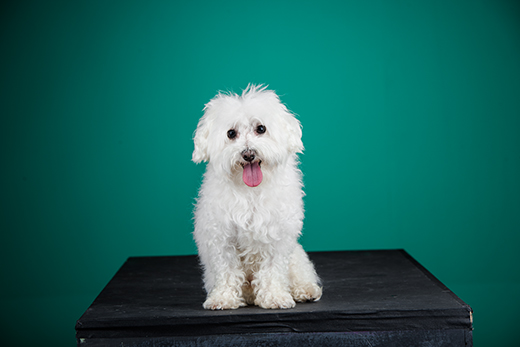Veterinary Health Center director warns animal owners to take precautions as excess heat warnings continue
Friday, June 29, 2018

The best place for pets to be during excessive heat is in a cool place inside, according to the director of Kansas State University's Veterinary Health Center.
MANHATTAN — With excessive heat warnings for many parts of the region through Saturday, Tom Schwartz, director of the Veterinary Health Center at Kansas State University, says pet owners need to take precautions.
Schwartz said the best thing is to keep all animals inside in cool places. But if the animals can't be brought inside, they must be given shade and plenty of water. Misting fans, sprayers and just a hose can help keep cattle, horses and pets cool.
In excessive heat conditions, Schwartz said that horses can lose more than 7 gallons of fluid as sweat.
"It is important to note that if the sum of humidity and temperature exceeds 130 degrees, horses and other animals can be at risk for heat stroke," Schwartz. "This risky combination of heat and humidity often occurs earlier in the day than most expect because of high humidity in the morning. For example, the heat plus humidity index was well over 150 at 8 a.m. Thursday, June 28. Black cattle, such as Angus, are at a higher risk for heat stroke as are animals with heavy coats, such as sheep and llamas. Make sure that they have access to shade and to water in their pastures."
Schwartz also said that no pet should be kept in a car for any length of time without the air conditioner on. He said the best thing is to leave pets at home and that they should only go outside when the temperature lowers. For horses, the combination of heat and humidity can be a problem even early in the day.
"Do not walk your pets once the day heats up," Schwartz said. "Walk only early in the morning or late in the evening when temperatures drop and try to avoid pavement that can burn a pet's pads. Dogs such as English bulldogs and pugs, who have trouble breathing, should not be outside for any length of time as they can easily overheat."
Some pets may enjoy boats and being around the water, but this activity should be avoided as well, Schwartz said.
"While you are in the water and staying cool, pets can roast on the deck," he said. "Pets normally have higher temperatures than people at around 101.5 degrees. Hyperthermia occurs when their temperature exceeds 105 degrees."
Dogs that suffer from heat stroke will become restless and either pant or drool excessively, Schwartz said. They may not respond to their name and appear unsteady on their feet. They should be moved to a cool area immediately. He recommends taking their temperature rectally, if possible.
"Pets with a high temperature should be cooled by wetting their ears, abdomen and feet," Schwartz said. "A fan will help. Offer cold water but do not force water into the mouth of a pet as they may not be able to swallow. Immediately seek care from a veterinarian."
The Veterinary Health Center at Kansas State University is a full-service veterinary hospital providing routine, specialty and emergency care. Its mission is to provide superior veterinary medical education, quality patient care and exceptional customer service in a caring environment. Questions can also be referred to the center at 785-532-5690.
